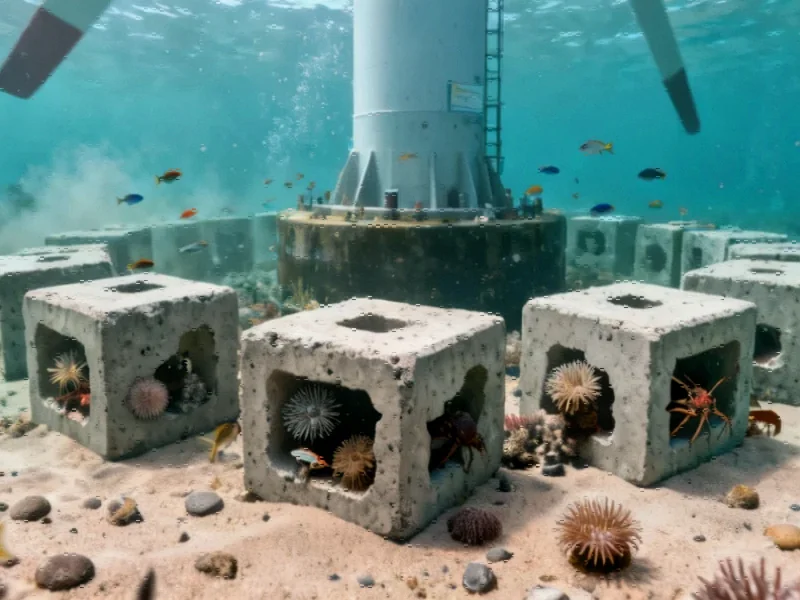According to IEEE Spectrum: Technology, Engineering, and Science News, Eavor’s geothermal project in Geretsried, Germany has achieved a 50% reduction in drilling times for its final four wells after initial challenges, with operations on the first of four loops nearly complete. The Canadian startup, which received a $107 million EU Innovation Fund grant, drilled wells reaching 2.8 miles deep with horizontal extensions of 1.8 miles each. The system is expected to deliver 8.2 MW of electricity and 64 MW of district heating when operational later this year, with construction on the second loop beginning March 2026. These improvements position closed-loop geothermal as a viable alternative to enhanced geothermal systems that face regulatory hurdles in markets like Germany. This breakthrough signals a potential inflection point for scalable geothermal energy.
The Drilling Economics Breakthrough
The most significant business implication lies in Eavor’s drilling optimization. When drilling rigs cost approximately $100,000 per day, cutting drilling time by 50% represents substantial operational expenditure reduction. More importantly, tripling drill bit lifespan through insulated pipe technology addresses one of geothermal’s most persistent cost drivers: equipment wear in extreme temperatures. This isn’t merely technical improvement—it’s fundamental business model enhancement. The learning curve effect demonstrated here suggests that subsequent projects could achieve even greater efficiencies, potentially bringing geothermal levelized costs below the $50-100/MWh thermal range that Eavor’s modeling already targets.
Strategic Market Positioning
Eavor’s closed-loop approach represents a deliberate strategic choice to avoid the regulatory and public acceptance challenges facing enhanced geothermal systems. While companies like Fervo Energy pursue higher efficiency through fracturing, Eavor has positioned itself for markets where fracking is politically untenable. This creates a clear market segmentation: enhanced geothermal for optimal resource extraction where permitted, closed-loop for regulatory-sensitive regions. The Germany location is particularly strategic—a market with high energy prices, strong renewable mandates, and fracking bans creates perfect conditions for Eavor’s technology to demonstrate commercial viability.
Revenue Model Innovation
Eavor’s combined electricity and district heating approach represents sophisticated revenue optimization. The flexibility to shift output between power generation and heat delivery based on seasonal demand creates a more resilient business model than single-output energy projects. During winter months when heating demand peaks, the system can prioritize thermal output, while summer operation favors electricity production. This dual-revenue stream approach mitigates the intermittency challenges that plague solar and wind while maximizing asset utilization. The 64 MW thermal capacity versus 8.2 MW electrical output suggests Eavor recognizes where the immediate economic value lies in European energy markets.
Investment Timing and Market Entry
The timing of Eavor’s breakthrough coincides with several market forces creating ideal conditions for geothermal scaling. European energy security concerns following Russia’s invasion of Ukraine have accelerated alternative energy investments, while increasing industry collaboration through organizations like Geothermal Rising indicates growing sector maturity. The EU’s substantial grant demonstrates that policymakers see advanced geothermal as strategically important for both decarbonization and energy independence. Eavor’s progress comes as competing technologies like enhanced geothermal systems face their own scaling challenges, creating a window of opportunity for closed-loop approaches to establish market leadership.
Scaling Implications and Competitive Landscape
Eavor’s claimed 35% thermal output improvement per loop suggests the company is addressing the fundamental economic challenge identified by experts like Cornell’s Jeff Tester regarding closed-loop efficiency. If Eavor can maintain this improvement trajectory while continuing to reduce drilling costs, they could achieve parity with conventional power sources faster than anticipated. The competitive landscape is evolving rapidly, with companies like Sage Geosystems and XGS Energy pursuing different technological approaches. What distinguishes Eavor’s business case is their focus on markets where regulatory constraints give them a natural advantage, allowing them to establish beachhead markets before expanding globally.
The Path to Commercial Viability
The Geretsried project serves as Eavor’s commercial proof point, but the real business test will come with subsequent projects. The company’s assertion that they’ll be “at the bottom of the learning curve” after four loops suggests they’ve built a replicable model rather than a one-off demonstration. This is crucial for attracting the project finance necessary to scale. Traditional infrastructure investors have been hesitant about geothermal due to perceived technology risk and high upfront costs. Eavor’s drilling time reductions and output improvements directly address these concerns, potentially opening the door to lower-cost capital for future projects. The success of this approach could determine whether geothermal transitions from niche player to mainstream energy source.





Your article helped me a lot, is there any more related content? Thanks!